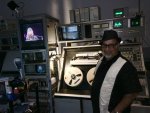- Joined
- Mar 11, 2006
- Messages
- 39,003
- Reaction score
- 14,341
- Location
- Denmark
- Gender
- Male
- Political Leaning
- Centrist
My 1660ti on my Asus ROG laptop will do fine for years.. helps that I dont play first person shooters 
But yea, people who recently bought a 2080 need their money back imo.. real low blow from Nvidia. Then again, 2080 was way overpriced imo as are most graphics cards. Graphics cards have become the "E-penis" of the gaming world. Lets look at the most popular games out there by Twitch viewers at 16:40 GMT.
1) Among US.. LOL, yea that can run on a machine from 2008 easily.
2) Just Chatting... any graphics card going back to the 1990s can handle that.
3) Counter Strike Global Offensive.. that game is so old that your microwave can run it. The recommended spec is a graphics card from 2012.
4) Call of Duty, Modern Warfare.. recommended graphics card from 2014...
5) League of Legends... a potato can run that. Geforce 8800 is recommended.. that is older than most players playing Fortnite... speaking off.
6) Fortnite .. something made in the last half a decade and yet the recommended card is the same as CSGO...
7) Minecraft...lol this game is so bad in graphics that it is nuts that they recommend a card from 2014-15.
8) Warcraft... came out over 15 years ago and has an old engine. Anything since 2012-14 can run this at near ultra settings.
9) Grand Theft Auto V ... again rather old game and again 2012-14 graphics card recommendation.
10) DOTA2.. again.. no need for mega graphics cards.
11) Fall Guys.. seriously, no need for a RTX 3080 there.
Point is, you would only really see any benefit in games that almost no one plays. Love when they do bench marks with Tomb Raider.. cool, yea err who plays that? At least they have the new flight simulator to test new graphics cards, but again who the hell plays that other than the few fanboys out there? Yea lets do DOOM in ultra settings.. who the **** plays DOOM still? Right now DOOM Eternal has 211 viewers on Twitch.. DOOM has 117.
But yea, people who recently bought a 2080 need their money back imo.. real low blow from Nvidia. Then again, 2080 was way overpriced imo as are most graphics cards. Graphics cards have become the "E-penis" of the gaming world. Lets look at the most popular games out there by Twitch viewers at 16:40 GMT.
1) Among US.. LOL, yea that can run on a machine from 2008 easily.
2) Just Chatting... any graphics card going back to the 1990s can handle that.
3) Counter Strike Global Offensive.. that game is so old that your microwave can run it. The recommended spec is a graphics card from 2012.
4) Call of Duty, Modern Warfare.. recommended graphics card from 2014...
5) League of Legends... a potato can run that. Geforce 8800 is recommended.. that is older than most players playing Fortnite... speaking off.
6) Fortnite .. something made in the last half a decade and yet the recommended card is the same as CSGO...
7) Minecraft...lol this game is so bad in graphics that it is nuts that they recommend a card from 2014-15.
8) Warcraft... came out over 15 years ago and has an old engine. Anything since 2012-14 can run this at near ultra settings.
9) Grand Theft Auto V ... again rather old game and again 2012-14 graphics card recommendation.
10) DOTA2.. again.. no need for mega graphics cards.
11) Fall Guys.. seriously, no need for a RTX 3080 there.
Point is, you would only really see any benefit in games that almost no one plays. Love when they do bench marks with Tomb Raider.. cool, yea err who plays that? At least they have the new flight simulator to test new graphics cards, but again who the hell plays that other than the few fanboys out there? Yea lets do DOOM in ultra settings.. who the **** plays DOOM still? Right now DOOM Eternal has 211 viewers on Twitch.. DOOM has 117.


